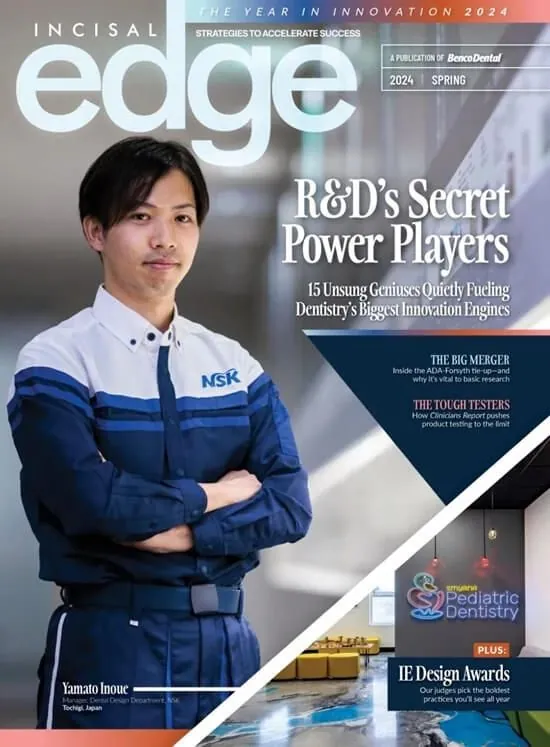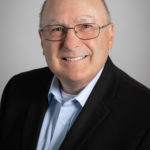Our profession is changing faster than anyone can possibly keep up with — and it’s only going to continue.
I WAS RECENTLY reading The Power of Habit by Charles Duhigg, a Pulitzer Prize–winning reporter at the New York Times. He explains how habits form, and how to change them. Duhigg defines habits broadly: parallel parking, gambling, exercising, eating and, yes, brushing our teeth all qualify.
This holds true in the professional realm as well. Each of us, after all, practices our own unique form of dentistry, from our first encounter with a patient to the exam, our treatment-plan presentation, even how we decide to organize our practice: All of it is based on what we’ve done before.
Whether you graduated from dental school five years ago or five decades, stop for a moment and consider just how much our profession has changed. When I teach, I refer to the way we practice as habitual, learned over many years — and (very much relatedly) I’ve noticed that what makes us most uncomfortable are so-called “disruptive forces.”
Optimist that I am, I prefer to call this phenomenon “disruptive innovation.” You’re familiar with the concept from everyday life: using the phone in your hand to order an Uber instead of calling a cab. Yet even for these seeming world beaters, disruption is in the air: Tesla, the manufacturer of high-powered electric vehicles, is reportedly in discussion with Uber to provide its next-gen fleet. Then there’s Google’s self-driving car: Talk about disruption.
Do you recognize how many jobs you do these days that you never went to school for? I work at my local grocery store — at the self-checkout, anyway.
I’m my own gas jockey, too, as are most of us (except in New Jersey and Oregon, the last two full-service holdouts).
As for disruption in dentistry, just look at continuing education. Ten or 15 years ago, you attended meetings and went to dental schools and local dental societies to get your CE credits. In fact, at the time many states required no CE to get your license renewed. Nowadays, of course, many of us do our CE online, via free Webinars at the end of which we can virtually interact with the presenter.
Dental school overall is becoming all about distance learning — students at the University of Maryland, where I teach, don’t have to be in the lecture hall; they can watch a live lecture from their kitchen, via our Web portal, over morning coffee.
Such disruption is working its way into the professional practice: Some dentists no longer order impression material, using a digital scanner instead — the same kind of scanner some schools use to evaluate student performance in preclinical “simlabs.” Many practitioners I talk with can’t remember the last time they ordered X-ray film. Most of them no longer contact their patients with a phone call from the front desk; instead, they send an e-mail and a text along with an automated phone call. (Overkill? Probably. But increasingly, this kind of outreach can be adjusted based on patient preference.)
Recently, in my role as licensure coordinator, I was faced with a bit of a conundrum. Those of you who took licensure exams remember that 140-page manual covering everything you needed to know for the test. Now that manual is just a URL or, at most, a PDF. The Commission on Dental Competency Assessments (formerly the North East Regional Board of Dental Examiners) no longer provides a printed text. Will students now be permitted to bring a tablet with them to their exam? Time will tell.
Whether you left dental school five years ago or five decades, stop and consider just how much our profession has changed.
Such rapid change is vertiginous, and it underscores the importance of looking ahead. None of us can accurately predict the future, but we shouldn’t remain stuck in what we think of as “the good old days.” How we practice dentistry is vastly different now. Who knew we’d be light-curing instead of self-curing composites? Or bonding thin pieces of porcelain to enamel with the confidence that they’ll last decades? Could we have known we’d use impression materials less and less often, and computers and digital imaging more and more? Radiographs via software. Implants instead of fixed bridges. Computer-assisted implant placement. Printed dentures. It’s an astonishing array.
So yes, expect disruption in just about every aspect of your practice — but take heart in the knowledge that in the overwhelming majority of cases, such disruption will redound to your patients’ benefit. Just be sure not to lose your facility with the human touch: your interactions with your patients, staff, lab support personnel, dealers and manufacturers. Disruption aside, that’s the kind of dentistry that never goes out of fashion.
HOWARD STRASSLER, DMD is a professor and the director of operative
dentistry at the University of Maryland School of Dentistry. He practices in
Pikesville, Maryland.




